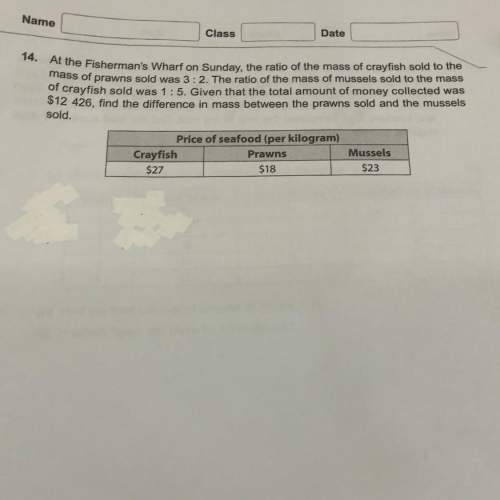
Mathematics, 01.11.2019 07:31 joannachavez12345
In section 1.3 we saw that the autonomous differential equation m dv dt = mg − kv, where k is a positive constant and g is the acceleration due to gravity, is a model for the velocity v of a body of mass m that is falling under the influence of gravity. because the term −kv represents air resistance, the velocity of a body falling from a great height does not increase without bound as time t increases. use a phase portrait of the differential equation to find the limiting, or terminal, velocity of the body. lim v(t -> infinity)=

Answers: 2


Another question on Mathematics

Mathematics, 21.06.2019 15:00
Find the sum of the measure of the interior angles of a polygon of 9 sides ; of 32 sides
Answers: 1

Mathematics, 21.06.2019 16:00
65 8 7 4 5 6 8 4 3 2 1 9 5 6 4 2 1 6 5 1 5 1 3 2 3 5 multiply the third number in the first row by the seventh number in the third row. add this result to the fifth number in the second row. add to this total ten times the fourth number in the third row. subtract the eighth number in the first row from the result.
Answers: 3

Mathematics, 21.06.2019 17:50
To solve the system of equations below, grace isolated the variable y in the first equation and then substituted into the second equation. what was the resulting equation? 3y=12x x^2/4+y^2/9=1
Answers: 1

Mathematics, 21.06.2019 21:00
A.s.a.! this is a similarity in right triangles. next (solve for x)a.) 12b.) 5c.) 12.5d.) [tex] 6\sqrt{3} [/tex]
Answers: 2
You know the right answer?
In section 1.3 we saw that the autonomous differential equation m dv dt = mg − kv, where k is a posi...
Questions

Mathematics, 12.10.2020 19:01




Mathematics, 12.10.2020 19:01

Social Studies, 12.10.2020 19:01





Mathematics, 12.10.2020 19:01

French, 12.10.2020 19:01




Mathematics, 12.10.2020 19:01



Mathematics, 12.10.2020 19:01

Mathematics, 12.10.2020 19:01








 is stable
is stable



